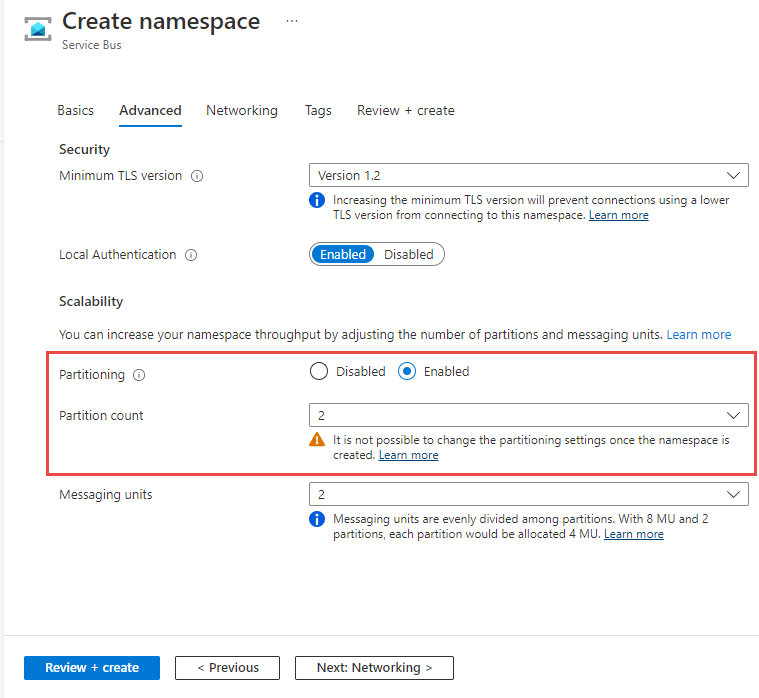During the recent Ignite conference, Microsoft announced the general availability (GA) of partitioned namespaces feature for Azure Service Bus, which allows customers to use partitioning for the premium messaging tier.
Azure Service Bus is Microsoft’s fully managed enterprise message broker in the cloud with message queues and publish-subscribe topics. The queues and topics components are in a namespace - a capacity slice of a large cluster of dozens of all-active virtual machines potentially spanning three Azure availability zones. The GA release is a follow-up from last year's public preview.
With a partitioned namespace in the premium tier, customers can benefit from an SLA of 99.99% in regions with available availability zones. In addition, Eldert Grootenboer, a program manager for Service Bus at Microsoft, writes:
Partitioned namespaces work with scaling through Messaging Units, as the configured MUs on a namespace are equally distributed across the different partitions. Currently, it is possible to scale up to 4 partitions, and as each partition can scale from 1MU to 16MU, this means we can scale up to a total of 64MU.
Partitioning of namespaces is possible in the standard and premium tier of Azure Service Bus. However, the behavior is different when creating a partitioned namespace. In the premium SKU, the number of partitions is set during namespace creation, whereas the standard SKU's partitioned namespaces have a predetermined number of partitions. Additionally, unlike the standard SKU, the premium SKU's partitioned namespaces do not permit non-partitioned entities within them.

Set partitioning in a namespace (Source: Microsoft Learn)
Standard and Premium are two different types of tiers. During the Ignite conference at a Service Bus Q&A session with the product team, attendees asked about the tiers. Grootenboer told InfoQ:
We often get questions about the differences between the standard and premium SKUs; the answer is that these are two very different architectures. The premium SKU had several system architecture changes from the standard and basic SKUs. This is true for both Service Bus and Event Hubs. This new architecture provides us with many advanced capabilities, which our customers can see leveraged in the Premium SKU.
AWS and Google, respectively, also offer a fully-managed messaging broker on their cloud platforms and have partitioning capabilities like Azure Service Bus. Amazon Simple Queue Service (SQS), for instance, provides high throughput for FIFO queues through partitioning. At the same time, Google’s Pub/Sub service offers partitioning in Lite topics.
When asked by InfoQ about what is driving this investment from Microsoft for the partitioning, here is what Grootenboer had to say:
One of the constraints on our platform is that we can only scale a single message broker up to a limit of 16 MU. However, we regularly get customers who want to scale beyond this for their high-throughput scenarios. With the addition of the new partitioned namespaces feature, we are no longer limited by the throughput of a single message broker. Still, we can instead combine the throughput of multiple brokers as a single abstracted namespace. This allows our customers to scale as high as they need without virtually any limitations on their throughput.
Lastly, the availability of the partitioning feature is mentioned in the documentation, and pricing details are available on the pricing page.


